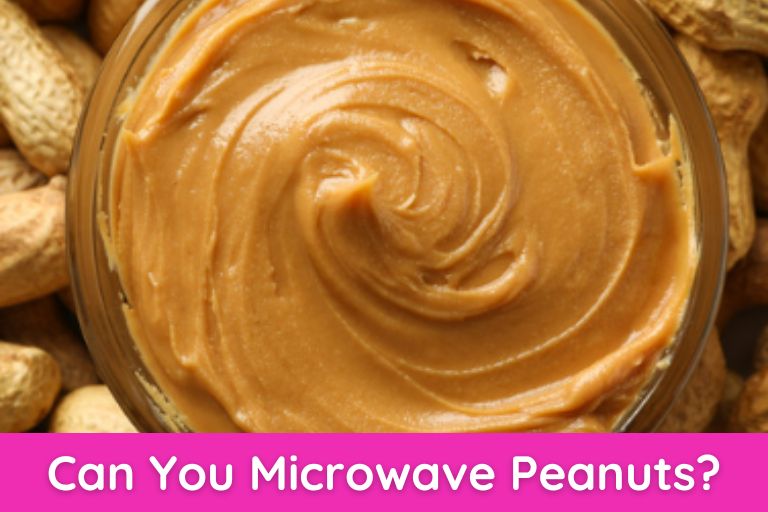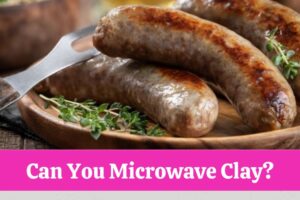Hey there! Have you ever wondered if it’s safe to microwave peanuts? If so, then you’ve come to the right place. We’re here to answer all your burning questions about how and why microwaving peanuts is a good or bad idea. Read on for an in-depth look at the topic!
Can You Microwave Peanuts?
Yes, you can microwave peanuts. However, this should only be done with caution and knowledge of the risks involved. Microwaving peanuts can cause them to become overly dry and hard or even burned if they are not overseen while they cook.
Can peanuts be cooked in the microwave?
Yes, peanuts can be cooked in a microwave. However, it is best to exercise caution when doing so, as microwaving peanuts can cause them to become overly dry or stiff.
Can you heat-roasted peanuts?
Yes, you can heat roasted peanuts in the microwave. However, it is important to remember that microwaving can cause roasted peanuts to become overly dry and hard or even burned if not monitored closely while they cook.
It is best to research which type of peanut works best for microwaving before attempting it. Be sure to keep an eye on the peanuts as they cook, and take necessary precautions to avoid burning them.
How to roast peanuts in the microwave?
Roasting peanuts in the microwave is relatively easy. Start by placing the peanuts on a paper towel in a single layer and then spread them out evenly. Next, set your microwave to medium heat, and cook for two minutes.
After two minutes:
- Check to see if they have reached your desired level of crispiness.
- If not, continue to cook in thirty-second intervals until they reach the desired level of crispiness.
- Keep an eye on the peanuts as they cook so that you don’t overdo it and burn them.
Can you reheat roasted peanuts in a microwave?
Yes, it is possible to reheat roasted peanuts in a microwave. Start by spreading the peanuts in a single layer on a paper towel and then setting the microwave to low heat. Cook for one minute and check for the desired level of crispiness.
If necessary, cook for 30-second intervals until the desired level of crispiness is reached. Monitor them closely so that you don’t overdo and burn them.
Why do peanuts spark in the microwave?
Peanuts spark in the microwave because of natural moisture within them. When heated to a high temperature, this moisture can be released as steam and cause a spark. To avoid sparking, it is important to spread peanuts out in an even layer on a paper towel before microwaving and keep an eye on them while they are being heated. It is also important to use low heat when microwaving peanuts and cook for short intervals until your desired crispiness is reached.
How do you cook nuts in the microwave?
To cook nuts in the microwave:
- Spread them in a single layer on a paper towel or other heatproof surface.
- Set your microwave to low heat and cook for 1 minute.
- Check the nuts for desired level of crispiness, and if necessary, cook for 30-second intervals until the desired level of crispiness is reached.
- Monitor them closely so that you don’t overdo and burn them.
Is it OK to microwave peanut butter?
It is not recommended to microwave peanut butter as it can cause it to become overheated and dry out. Peanut butter’s natural oils are heat-sensitive and can be destroyed if overheated. It is best to heat it in the oven or on a stovetop over low heat.
How long do you microwave boiled peanuts?
Boiled peanuts should be microwaved on a low setting for 2 to 3 minutes or until they are warm to the touch. Monitor them closely while in the microwave so they do not burn.
What foods should not be reheated in the microwave?
Certain foods should not be reheated in the microwave as it can cause them to become dry, flavorless, and potentially unsafe. These foods include eggs, fish, meat, dairy products such as milk and cheese, and vegetables. In addition, any food that has been cooked in the microwave should not be reheated in the same appliance.
How long does to warm nuts to microwave?
Nuts can be warmed in the microwave for a few seconds or up to 1 minute on medium power. Be sure to monitor them closely as they warm to make sure they don’t burn.
How do you refresh roasted peanuts?
To refresh roasted peanuts, spread them on a baking sheet and bake at 350 degrees Fahrenheit for 4 to 5 minutes. Stir halfway through to ensure the nuts are evenly heated. This will help bring back the crunchy texture and flavor of freshly roasted peanuts.
Does roasting nuts destroy nutrients?
Roasting nuts does not destroy most nutrients, but it can reduce them a little. The primary vitamins and minerals that may be slightly reduced during roasting are vitamins A and E, magnesium, calcium, and iron.
Is it OK to boil peanuts?
Boiling peanuts is a popular cooking method in many parts of the world. Boiled peanuts are soft and unique, but they are not as crunchy as roasted peanuts. Boiling does not destroy essential vitamins or minerals, though it may reduce some vitamins and minerals slightly. However, boiling can cause some loss of flavor and texture.
How long do you soak peanuts before eating?
Peanuts should generally be soaked for at least 8 hours before eating. Longer soaking times can help to increase the peanuts’ nutrient content and reduce the risk of toxins and bacteria. Soaking also helps to make the outer skin of the peanut softer, making them easier to digest.
Does heating a nut weaken it?
Yes, heating can weaken nuts. Heat causes proteins and fats in the nut to harden, which can make the nut more brittle and less flavorful. Heating also causes a loss of water-soluble vitamins and minerals in nuts, so they should be cooked at lower temperatures for shorter periods if possible.
What happens if you microwave nuts?
It would help if you did not know microwave nuts, as microwaves can cause the proteins and fats in nuts to become too hard, making them less flavorful and more brittle. Microwaving also causes a loss of water-soluble vitamins and minerals in the nut. For more flavorful results, it is best to use other cooking methods, such as toasting or roasting.
What happens if I heat peanut butter?
When heated, peanut butter can become dry and crumbly. This can make it harder to spread and less enjoyable to eat. You should avoid heating peanut butter as much as possible. If you need to heat it, do so at a lower temperature for a shorter period.
Can you microwave Glass?
It would be best if you never microwaved Glass. Glass can easily shatter when heated, which could cause severe injury or property damage.
Do you have to soak peanuts before boiling them?
Boiling peanuts does not require them to be soaked beforehand. Boiling without soaking can give a nuttier flavor and firmer texture than soaking. You should ensure the peanuts are completely submerged in water throughout the boiling process for optimal results.
Are boiled peanuts better hot or cold?
Boiled peanuts are generally enjoyed hot or warm as they bring out their flavor and make them easier to eat. However, they can also be enjoyed cold or at room temperature if desired.
Can I eat 100g of peanuts a day?
Eating 100g of peanuts daily is generally considered safe and can benefit your health. However, it is recommended that you consult with your doctor or a nutritionist before making any major dietary changes.
Does boiling peanuts reduce protein?
Boiling peanuts does not reduce the protein content of the peanuts, but it may reduce their availability. Boiling breaks down cell walls and renders some of the proteins indigestible, which reduces their bioavailability.
What is the healthiest nut to eat?
It is difficult to say what the healthiest nut to eat is, as all nuts contain various beneficial nutrients. However, some of the most commonly accepted healthier options include almonds, walnuts, cashews, and pistachios. They are all high in protein and healthy fats while providing vitamins, minerals, and antioxidants.
Is it OK to eat peanuts on an empty stomach?
Eating peanuts on an empty stomach can be beneficial for your health. Peanuts are a good source of healthy fats, vitamin B-6, copper, and niacin. Eating them on an empty stomach may help you digest the nutrients more efficiently and reduce the risk of nutrient deficiency. However, it is important to remember that eating too many peanuts could cause digestive discomfort.
What are the disadvantages of peanuts?
The disadvantages of eating peanuts include a higher incidence of food allergies, an increased risk of weight gain if consumed in excess, and an increased intake of unhealthy fats.
How do you make nuts crispy again?
To make nuts crispy again, you can bake them in the oven at a low temperature until they are crispy. You should preheat your oven to 350°F, spread the nuts on a baking sheet, and bake for 8-10 minutes. Ensure to check and stir the nuts every few minutes while cooking, so they do not burn. Once they are done, allow them to cool before serving.
Conclusion
It can be tempting to try and microwave peanuts, but it is not recommended due to the loss of flavor and nutrients that can occur. Other healthier methods for preparing nuts, such as baking or roasting them, can bring out their natural flavors without sacrificing nutrition.
Eating 100g of peanuts a day can also provide health benefits, although it is important to consult your doctor or nutritionist before making any significant dietary changes. We invite you to share your thoughts on this topic in the comments section below – can you successfully microwave peanuts?




